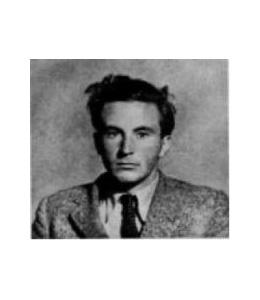Brian was the elder son of Thomas A Rafferty and his wife, Keyna Rogan who married in Sculcoates, Hull in 1914. Keyna belonged to Hull where her father was a merchant tailor.
Brian was educated at Beaumont and Matriculated in 1937. He spent part of that summer in Canada with a party of young men. They left Liverpool for St. John’s Newfoundland on 30 July and returned in mid-September. He was up at Christ Church for only one year.
He was a Captain in the Royal Berkshire Regiment and was attached to the Special Operations Executive. Those recruited, usually, had considerable experience of the country to which they were sent to help the local resistance. Initial training was at Wanborough Manor, the School for Secret Agents, near Guildford. They attended a commando course in the Scottish Highlands and were taught how to use guns and explosives, sabotage, wireless telegraphy, and how to live secretly in occupied territories. They also needed to master the techniques of unarmed combat and silent killing.
On 24 September 1942, along with Sydney Hudson and George Jones, he was dropped by parachute near Clermont-Ferrand. Brian was the organiser of operation “Headmaster”. His code name was Dominique and he was organising the resistance groups in the Massif Central.
On 8 October, the French Police arrested Sydney Hudson. On 3 December, George Jones had a serious bicycle accident. On 15 April, the next year, Harry Ree was parachuted into France to join Brian. On 17 May, Brian was stopped and arrested and on 23 May, George Jones was arrested by the French police and handed over to the Gestapo.
Brian was taken to Flossenburg concentration camp. It had been built in 1938, as a German prison at Flossenburg, in the Oberpfalz region of Bavaria. The camp's site was chosen so that the prisoners could be used as unpaid labour, to quarry the granite found in the nearby hills. They were housed in 16 huge wooden barracks. The crematorium was built in a valley straight outside the camp. By 1945, there were almost 40,000 inmates in the whole Flossenburg camp system, including nearly 11,000 women. Inmates were made to work in the Flossenburg camp quarry and in making armaments.
As the defeat of Germany approached, thirteen of the Special Operations Executives whom the SS had tortured, repeatedly, in order to extract information, were executed by hanging on 29 March 1945. Brian was amongst them.
In early April, as the American forces were approaching the camp, the SS began a forced evacuation, leaving only the sickest behind. More than 7,000 prisoners were shot before they reached Dachau. By the time the U.S. Army 90th Infantry Division freed Flossenburg on 23 April more than 30,000 prisoners had been killed.
The award of the Military Cross was gazetted on 15 November 1945. He received the Croix de Guerre with Etoile de Vermeil.
He is commemorated on the Brookwood Memorial Panel 12. Column 3, on the Memorial at Valencay, Section F and the Museum at Flossenburg. His name is on the Special Forces Roll of Honour.
The announcement of his death on 3 July 1945 said “Eldest son of Mr. & Mrs. Thomas Rafferty of Montmorency, Seine et Oise, France and brother of Modwena and Keiran of The Newlands, Machylleth, Montgomeryshire.”
His sister served with the FANY in Egypt, returning to England at the beginning of January 1945.
His file in the National Archives HS 9/1225/2
Modwena’s file HS 9/1225/3 is closed until 1 January 2025.


